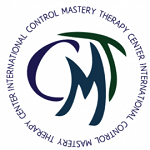- Have any questions?
- 510-612-6392
- infocmtcenter@gmail.com
EVALUATING my PATIENTS TRAUMAS- in order to develop my patient’s possible plan.
July 4, 2017Joe Weiss began over sixty years ago to formulate the cognitive psychoanalytic model of psychopathology and psychotherapy today known as Control-Mastery Theory (CMT). With the choice of this name, that often misleads those who hear it for the first time, Joe and Hal wanted to emphasise the adaptive nature of unconscious mental processes, and the patient’s motivation to control and finally master their own attitudes and behaviours’ (Weiss, Sampson, 1982).
CMT can be defined as a cognitive-psychodynamic-relational theory because it developed originally within a psychoanalytic framework, but it also integrates cognitive, psychodynamic and relational perspectives at the conceptual level (Migone, Liotti, 1998).
Weiss, Sampson and the San Francisco Psychotherapy Research Group (SFPRG, a group of clinicians and researchers previously known as the Mount Zion Psychotherapy Research Group, MZPRG) started studying and developing these ideas about the therapeutic process, empirically investigating psychotherapies (Weiss, 1986; Sampson, Weiss, 1986), and ending up in the formulation of the CMT.
The CMT is a theory of how the mind operates, how psychopathology develops, and how psychotherapy works. It provides a set of concepts that can help clinicians in understanding and in formulating patient’s problems and goals in therapy and in learning how to work with the patient towards achieving those goals. CMT was not born as a new school of therapy, nor a new set of therapeutic techniques (Silberschatz, 2005).
Weiss formulated CMT when, during his collaboration with Sampson, they were studying the transcripts and notes of Weiss’s and other therapists’ cases conducted following Freud and other theoretical viewpoints. Weiss and Sampson wanted to understand which elements make a therapeutic relationship a successful one. They focused on the identification of significant therapeutic progress to understand how patients access change in psychotherapy.
Their assumption was that in a therapeutic relationship there are processes happening between the therapist and the patient that the existing theories did not yet specify (Comello, 2003). Weiss and Sampson started from the conviction that while every case is case-specific, nevertheless some elements of the treatment can be considered as common, and therefore studied to improve psychotherapy (Sampson, 1995).
Freud’s idea was that the unconscious mind is made of impulses and defenses regulated automatically by the pleasure principle, rendering them beyond the patient’s control, thoughts, or beliefs. In contrast to this, Weiss formulated the hypothesis of a higher mental functioning. He assumed that people function both unconsciously and consciously in very similar ways: thinking and making inferences through testing reality, and making decisions and building plans about their lives as a result of these unconscious and conscious processes (Weiss, 1993).
Weiss assumed that people are powerfully motivated to understand their reality and to adapt to it. While doing so, they develop, starting in early childhood, beliefs about their reality including beliefs about themselves and their interpersonal world, by inference from experience. Some of these beliefs might be “pathogenic”, or considered maladaptive, if they impede a person from functioning and prevent that person from pursuing desirable goals in their life (Sampson, 1990b). According to CMT every child needs its parents for survival, safety, love and security. In order to get along with the parents, a child learns and infers as much as possible about their parents: the way the parents relate to the child and how they expect the child to relate to them. It is in the child’s nature to develop ideas about their parents’ needs and desires: what they want, expect and will allow. A child has a tendency towards feeling guilty for any impulse, attitude, goal or affective state, which the child believes might be against their parents (Weiss, 1993).
According to CMT, psychotherapy is an occasion for the patient to disconfirm pathogenic beliefs by testing their beliefs in the relationship with the therapist. In CMT the process of testing is explained as a mostly unconscious way for the patient to feel safe in the therapeutic dyad, and to bring up materials connected to traumas and beliefs that the patient wants or needs to work on. Testing should be helpful for the therapist to collect information about problematic experiences of the patient. The patient, through testing, should eventually feel safer and introduce more details and thoughts about traumas and beliefs (Sampson, 1990a; Rappoport, 1997).
CMT addresses the discussion about tests through a case-specific approach. It does not propose new techniques for dealing with particular patients, but rather a model for conceptualizing how a person’s problems develop and the ways the patient will need to test the therapist to disconfirm pathogenic beliefs. Key tests are those that are most critical to the patient because they are central to the predominant pathogenic beliefs that the patient is working on to disconfirm so as to access change (Pole et al., 2002; Silberschatz, 2005).
Concepts like “pathogenic beliefs” and “test” are central to this approach. In essence the idea is that people develop beliefs about themselves, which can be maladaptive on different levels; they try in therapy to test and disconfirm these beliefs. (Valentina Gandhi, 2015). From these basic ideas I have learned a way to understand how therapy works and how to organize my therapeutic dance steps.
